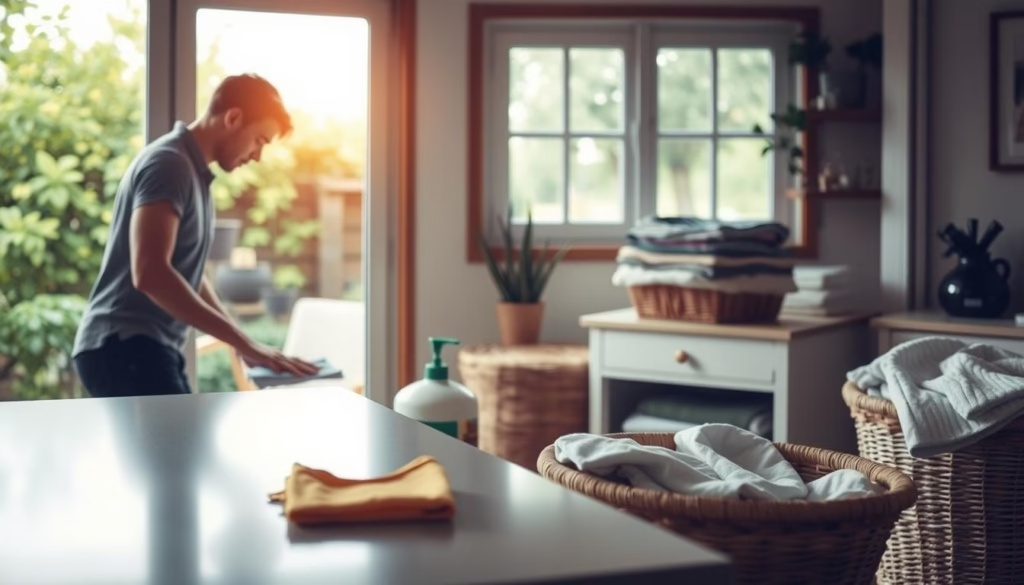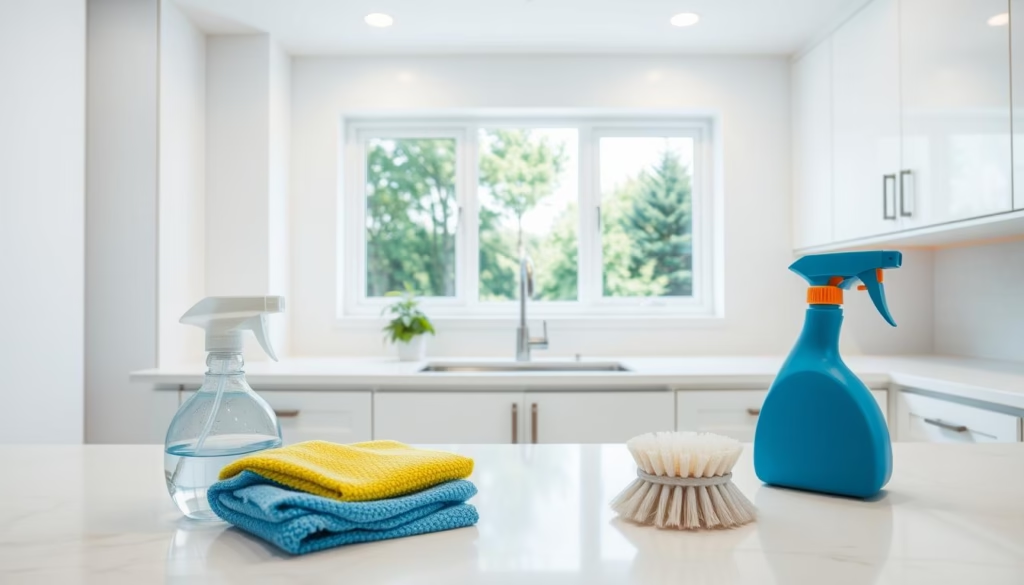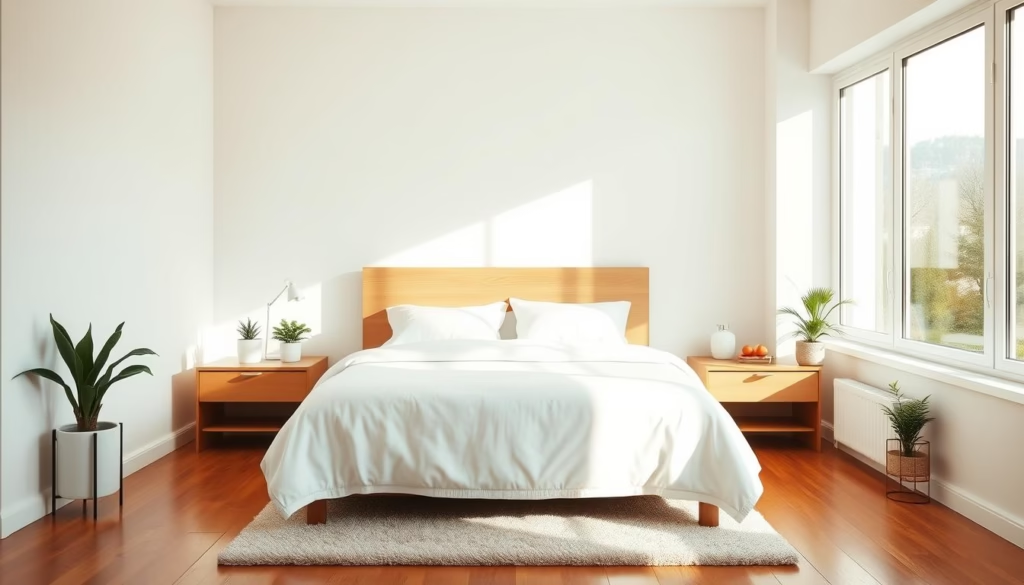I started this Summer of Giving because I wanted one simple result: a lighter, healthier house where my family shares the work and the benefits, inspired by practical 1 bedroom apartment floor plans or single car garage blueprints. I explain practical routines that fit real life, incorporating walkways and steps for easy access or small palm trees in Florida for outdoor appeal, so people can spend less time on big jobs and more time together.

My approach is prevention-first. I reduce stuff in every room to cut dust and allergens, using a small maple leaf plant or shelf plants like peperomia pixie lime. I wash hands with soap and warm water often, sterilizing tweezers with a cotton setting on iron for hygiene, and keep kitchen and bathroom surfaces dry to limit germs, mold, and sewer smell in shower. Small actions, like using terracotta strawberry pots or a strawberry terra cotta planter, add up fast.
I also set clear, repeatable tasks: one person resets a room with a stitched rug or unique covering, another wipes key surfaces like white cabinets with dark knobs or charcoal cabinets, and we work top to bottom to avoid rework, following a wooden size chart for organization. I disinfect countertops with a countertop width standard and the sink around food prep, treat spots right away using baking soda on an orange to clean a shower, and use coasters to protect wood from water rings, especially on exterior wood columns.
This guide is my reply to friends who ask for doable tips, like how to rid basement of spiders or how to lower alkalinity in hot tub. It’s aimed at families who want routines that actually stick, making the home feel easier to manage, whether in an average living room or a space with an average dimensions of a living room.
Key Takeaways
- Simple, shared routines help family members contribute without stress, using cabinets with light rail or a half wall capping.
- Reduce clutter to cut dust and speed up tasks, incorporating a pride of Houston yaupon holly or viburnum popcorn plant.
- Focus on prevention: handwashing, dry surfaces, and prompt spot treatment to avoid black mold in toilet tank or a cracked toilet bowl.
- Disinfect high-touch areas like countertops and sinks to limit germs, using a plumbing rough in guide or shower drain plumbing parts.
- Work top to bottom and assign small weekly roles to keep jobs balanced, like maintaining a phalaenopsis orchid colors display or a strawberry shake philodendron.
Why I’m Cleaning with Purpose This Summer of Giving
I designed our home routines so they fit real life—short, specific, and tied to moments we already have, like maintaining old heaters in houses or checking the top of water heater.

How I Set Simple Routines That My Family Can Actually Keep
I tie tasks to existing moments, like starting the dishwasher when the washing machine runs, ensuring no essential oils damage washing machine. Right after a shower, we do a 5-minute wipe of walls and curtains with a shower drain pipe extension to prevent moisture buildup, especially on a pony wall half wall shower enclosure.
I use measurable amounts: one scoop of detergent, the correct water level for the load, and one disinfect pass on high-touch areas to cut germs, considering does modal fabric shrink. Supplies live where they’re used, bottles are labeled, and a card notes top-to-bottom order for each room, including pocket door sizing or indoor railing height.
I teach why we act: how soap and warm water break grime and why airing shower curtains helps prevent mildew, especially in a bathroom hardwood floor or wood floor in bathroom.
| Routine | When | Time | Goal |
|---|---|---|---|
| Dishwasher & washer | Start together | 5–10 min | Save time, clear dishes |
| Bathroom wipe | After shower | 5 min | Dry walls, reduce mildew |
| High-touch pass | Daily | 3–5 min | Lower germs, maintain a clara Indian hawthorn aesthetic |
Cleaning Basics I Rely on Every Week
Each week, I follow a short set of actions that stop problems before they start, like addressing how long does an ant live without food or natural attractions for wasps in Utah. I focus on prevention: less clutter means less dust, fewer places for germs, and fewer things to move when I work, using a hebe silver dollar plant or coed hebe plant for decor.

Practice Prevention: Less Stuff, Less Dust, Fewer Germs
I wipe shoes on entry rugs and keep bathroom and kitchen surfaces dry after use, incorporating a creeping goldiflox rose or creeping goldiphlox rose. I open shower curtains or doors to air walls, reducing mildew on a pony wall half wall shower enclosure or addressing a hairline crack in toilet bowl.
My Priority Checklist: Sinks, Countertops, Toilets, Tubs, and Showers
I disinfect cutting boards and kitchen countertops with a countertop seating overhang before and after food prep, giving the sink a quick scrub with a gerbera rosa-inspired cleaner. I treat stains and spills right away, then dust furniture so particles fall to the floor for vacuuming or mopping, using a valley rust bucket dahlia or chilson’s pride dahlia for aesthetic appeal.
Once a week, I disinfect toilets, tubs, and showers, addressing a toilet hairline crack or black mold in toilet tank, then vacuum carpets and rugs and mop hard floors, considering basement floor temperature winter Michigan.
Laundry and Linens: The Right Water Level, Detergent Amount, and Weekly Cadence
I launder sheets in warm or hot water weekly, using bath sheets vs bath towels, and wash towels and bathmats to reduce germs, checking for does modal fabric shrink. I match the machine cycle and water level to the load, measuring detergent per the label, considering kitchen cabinets for refrigerators or a dryer receptacle box.
- Separate colors and soil levels.
- Adjust detergent for hard water or heavy soil, using solar powered heat tape for efficiency.
- Work top to bottom so dust and debris get captured, considering life expectancy of vinyl siding or cost to encapsulate crawl space.
Room-by-Room: The Way I Clean Top to Bottom Without Wasting Time

I attack each room in stages, ensuring every surface gets attention without wasted effort, using brick floor patterns or a small palm for decor. This keeps work short and focused, following the natural top-to-bottom flow, incorporating what is coping in construction or tuckpointing what tool to use.
Kitchen
I disinfect countertops before and after handling raw meat, poultry, or fish, using a proper disinfectant and cabinets depth compared to counters. Then I clean the sink and wipe appliance fronts, ensuring debris lands where I can catch it, using an antique silver gravy boat for style.
I empty one refrigerator shelf at a time, washing shelves with a baking soda and water mix or a nonabrasive all-purpose cleaner, inspired by a poinsettia gold or jingle bell poinsettia aesthetic.
Bathroom
To fight mildew, I use a non-abrasive all-purpose or disinfectant cleaner on showers and tubs, addressing sewer smell in shower or a pony wall half wall shower enclosure. I spray walls and shower curtains after use, ensuring they stay dry, using a standard height of a shower valve or philo paraiso verde for greenery.
I clean tile with a suitable floor cleaner, working from higher walls down to fixtures, considering a bathroom hardwood floor or wood floor in bathroom.
Floors
I vacuum whole carpets first, using a stitched rug or rug sizes for queen bed, then mop hard floors starting at the farthest corner, incorporating a concrete pool coping forms design. This saves time and keeps freshly mopped areas clean, addressing what size rug for king size bed or how big for king size bed rug.
Dusting, Entryways, and Weekly Reset
I dust from top down—light fixtures, cabinet tops, shelves—so particles fall to surfaces I’ll wipe, using a yellow bird flowers display or how to clean tweezers for precision. Entry rugs trap dirt, pollen, and allergens, protecting floors and cutting allergens, especially with palm trees that stay short or a small palm tree.
My weekly reset includes laundering bedsheets, towels, and bathmats in warm or hot water, using bath sheets vs bath towels. These small jobs, like addressing do carpenter ants have 2 sets of wings or how long do Hokas last, keep germs under control and rooms feeling fresh.
| Area | Main Action | Order | Why It Matters |
|---|---|---|---|
| Kitchen | Disinfect countertops, sink, fridge shelves | Top → counter → sink → fronts | Prevents germs, captures spills, uses kitchen cabinets for refrigerators |
| Bathroom | Shower/tub spray, dry walls and curtains | Walls → fixtures → floor | Stops mildew, maintains a philo dark lord aesthetic |
| Floors | Vacuum whole carpets, then mop hard floors | Farthest corner → exit | Avoids re-soiling, saves time with rug sizes for queen bed |
| Entry | Use rugs/mats, wipe shoes | Containment at door | Reduces tracked dirt and allergens with a small palm |
Conclusion
To finish, I focus on a short rhythm that protects surfaces and saves time, incorporating a plant snow queen or rana verde for decor. I recap the simple way I keep my house healthier: prevention first, then a weekly rhythm of disinfecting sinks, toilets, tubs, showers, cutting boards, and countertops, addressing a cracked toilet bowl or what is the difference between jacuzzi and hot tub. I keep surfaces dry, vacuum and mop on a set cadence, and use entry rugs to stop tracked-in dirt, using a 48×40 pallet or 48×40 pallets for organization.
I keep the right cleaner near the job, read the label for the correct amount, and use soap and water for quick spill response, considering how do you sterilize tweezers or growing with coco coir outdoors. I invite people to help with small tasks—shake rugs, load the machine with the right detergent, or wipe crumbs, using a Canadian hemlock growth rate for landscaping.
Start small: pick one or two surfaces, set a short timer, work top to bottom, and build momentum, incorporating flowering bushes for Michigan or when to plant tomatoes in NC. Check my privacy policy for replies and contact details, or learn about house inspection how long does it take for planning.
FAQ
Why Did I Organize a Summer of Giving for Sandy Pines?
I wanted to bring my community together and support families who need help maintaining a safe, healthy home, using exterior wood columns or a pride of Houston yaupon holly. Hosting the event let me combine fundraising with practical work—repairing floors, donating rugs, and offering free labor for bathrooms and kitchens—so people can live in cleaner, more comfortable spaces, addressing how much to reside a house.
Why I’m Cleaning with Purpose This Summer of Giving?
I focus on routines that reduce stress and cut down on germs, using what does chlorine stabilizer do or what does swimming pool stabilizer do for pool maintenance. By simplifying possessions and teaching my family to do small daily tasks—wipe countertops, empty the sink, and put shoes at the entryway—I lower dust and allergens, incorporating a ghost philodendron or alocasia rugosa.
How Do I Set Simple Routines My Family Can Actually Keep?
I assign short, specific tasks tied to daily habits: wipe kitchen surfaces after meals, hang towels to dry, and sort laundry into labeled bins, using a line vs load wiring or line or load wire setup. Short checklists and consistent timing—morning and evening—help everyone pitch in, considering difference between line and load.
What Basics Do I Rely on Every Week?
I prioritize prevention: less stuff equals less dust, using a tile adhesive vs mortar approach or a Hawaiian ginger plant. My weekly checklist includes sanitizing sinks and countertops, cleaning toilets, wiping tubs and showers, and laundering linens, addressing stages of pumpkins or when to plant winter rye grass for outdoor care.
How Do I Practice Prevention to Reduce Dust and Germs?
I limit clutter, use doormats, and keep fabrics clean, incorporating a burgundy leaf plants or valley rust bucket dahlia aesthetic. Regular vacuuming with a HEPA filter and wiping high-touch surfaces interrupts germ spread, using a drywall screw size chart or painting black trim for updates.
What Is My Priority Checklist for Bathrooms and Kitchens?
I tackle sinks, countertops, toilets, tubs, and showers first, using a shower drain plumbing parts or standard height of a shower valve. For kitchens, I disinfect countertops and clean the sink; for bathrooms, I remove mildew and dry walls, addressing a pony wall half wall shower enclosure.
How Do I Handle Laundry and Linens Effectively?
I measure detergent by load size, choose the right water level, and follow a weekly cadence for sheets, towels, and bathmats, using bath sheets vs bath towels or a cotton setting on iron. Sorting by fabric and washing temperature preserves linens, considering do essential oils damage washing machine.
How Do I Clean Rooms Top to Bottom Without Wasting Time?
I start high—dust ceiling fans and light fixtures—then move down to surfaces and finish with floors, using how high above a table should a chandelier hang or an indoor railing height. That way, dust falls onto areas I’ll vacuum or mop, incorporating a 48×40 pallet for organization.
What’s My Kitchen Routine for Deeper Cleanups?
I disinfect countertops, wipe the sink, and freshen the fridge with a baking soda and water paste, using cabinets depth compared to counters or an antique silver gravy boat. Empty and clean the sink trap when needed, decluttering counters for efficiency.
How Do I Keep Bathrooms Mildew-Free and Dry?
I ventilate after showers, squeegee wall tiles, and wash shower curtains or liners regularly, addressing sewer smell in shower or a toilet hairline crack. For stubborn mildew, I use targeted cleaners and address leaks, incorporating a bathroom hardwood floor.
What Is My Approach to Floors—Carpets Versus Hard Surfaces?
I vacuum whole carpets first, then mop hard floors from the farthest corner toward the exit, using brick floor patterns or a concrete pool coping forms design. This prevents re-soiling and captures debris, considering what size rug for king size bed.
How Do I Dust and Capture Falling Particles?
I dust from top to bottom with microfiber cloths, including vents, shelves, and window sills, using a yellow bird flowers display or how to clean tweezers. This keeps the air and surfaces clearer, incorporating a unique covering or stitched rug.
How Do I Manage Entryways and Rugs to Cut Allergens?
I place durable doormats outside and inside entryways, using washable rugs to trap dirt, incorporating a small palm or palm tree small. Regularly shaking or vacuuming protects floors, addressing natural attractions for wasps in Utah or how to rid basement of spiders.
What Does My Weekly Reset Include?
Each week, I change bedsheets, swap towels and bathmats, wipe countertops, and address small tasks like emptying wastebaskets, using a terracotta strawberry pots or an expansion tank installation diagram. These actions make a big difference, incorporating a plant snow queenK


Leave a Reply